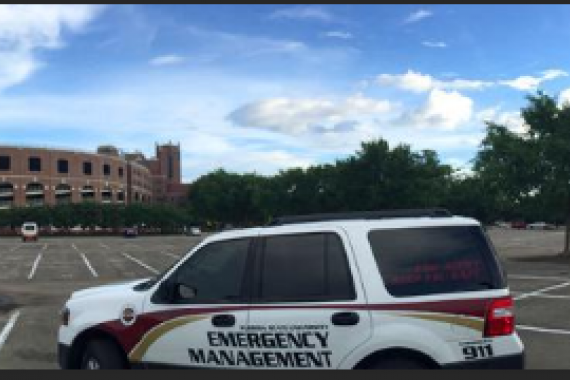Risk Assessment
What is the historical probability of occurrence of a Heat Advisory at FSU?
Very Likely. Weather conditions that warrant the issuance of a Heat Advisory occur at least once per year during the summer, May - September.
What is the historical probability of occurrence of an Excessive Heat Warning at FSU?
Likely. Weather conditions that warrant the issuance of an Excessive Heat Warning occur on average once every 3 to 5 year in Tallahassee.
Are there enhanced environmental conditions that enhance to the risk?
Yes - Seasonal. The greatest chance of experiencing extreme heat at Florida State University occurs during the summer months of May through September.
Are there any mitigating factors in place that reduce the risk?
No - Unmitigated.
Consequence Analysis
What is the threat to public health?
None to Death. Extreme heat conditions can have significant to fatal impacts upon human health. There are a number of factors which contribute to an individual's risk for heat-related illness including: age, obesity, illness, medication, temperature, humidity level, time spent in the heat, hydration level, exposure to direct sunlight, and others. The signs and symptoms of heat-related illness are progressively worse. If one fails to heed the signs and seek immediate medical attention, hyperthermia and death may result.
What is the threat to responder health?
None to Death. Extreme heat conditions can have significant to fatal impacts upon human health. There are a number of factors which contribute to an individual's risk for heat-related illness including: age, obesity, illness, medication, temperature, humidity level, time spent in the heat, hydration level, exposure to direct sunlight, and others. The signs and symptoms of heat-related illness are progressively worse. If one fails to heed the signs and seek immediate medical attention, hyperthermia and death may result. First responders are at higher risk if they are physically exerting themselves or wear bulky personal protective equipment.
What is the threat for structural damage?
None to aggravation of pre-existing condition.
What is the threat for property (grounds) damage?
None to aggravation of pre-existing condition. An extended duration of excessive heat could distress landscaping.
What is the threat for infrastructure damage?
None to Minor. The greatest threat for infrastructure damage is through the loss of electrical power generating capacity. During times of excessive heat, air conditioning units work extra hard and demand a lot more electricity. Brownouts and blackouts are possible when electricity demand exceeds the utility's ability to generate it.
What is the threat for service delivery impacts?
None to Minor. Outdoor activities, including athletic, recreation, or maintenance work, may need to be rescheduled for earlier or late in the day to avoid peak temperatures. In the event of a loss of electrical power or chilled water capacity, the lack of climate control in a building may necessitate evacuation and closure.
What is the threat for environmental impacts?
None to aggravation of pre-existing condition.
What is the threat for economic / financial impacts?
None to negligible. Increased utility costs.
What is the threat for impacts upon regulatory / contractual obligations?
None to negligible.
What is the threat for an impact upon the reputation of the institution or public confidence?
None to Minor. Should excessive heat result in mass illness or fatalities on campus, the University may be accused of failing to properly prepare for or respond tothe threat; thus public confidence in the institution could suffer. This can be especially true if there is any perceived coverup, unethical or illegal activities.











